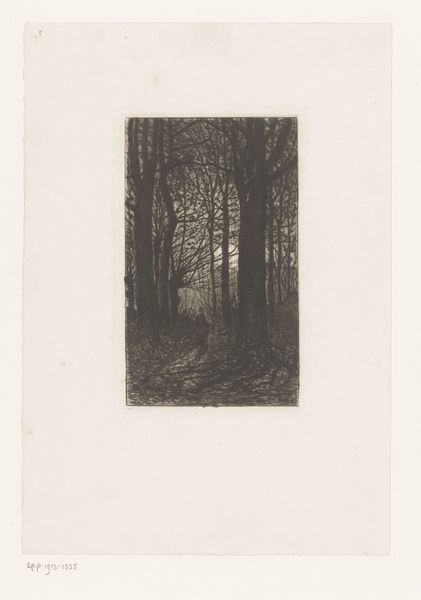
drawing, print, etching, wood
#
drawing
# print
#
impressionism
#
etching
#
landscape
#
forest
#
wood
Dimensions: height 243 mm, width 162 mm
Copyright: Rijks Museum: Open Domain
This evocative print of a forest scene was made by Henri Rul, who lived from 1862 to 1942. It’s an etching, a printmaking process that relies on the corrosive properties of acid. The artist would have covered a metal plate with a waxy, acid-resistant ground. Then, using a sharp needle, he would have drawn an image into that ground, exposing the metal beneath. Next, the plate would have been submerged in acid, which bites into the exposed lines. The longer the plate is left in the acid, the deeper the lines become. The plate is then inked and run through a press, transferring the image onto paper. Notice how the velvety blacks and subtle grays are achieved by the density and depth of the etched lines. Rul's choice of etching as a medium speaks to a wider social context. As a relatively affordable means of image production, etching democratized artmaking. The resulting prints, like this atmospheric forest scene, could be widely circulated, bringing art to a broader audience beyond the traditional elite.
Comments
No comments
Be the first to comment and join the conversation on the ultimate creative platform.






